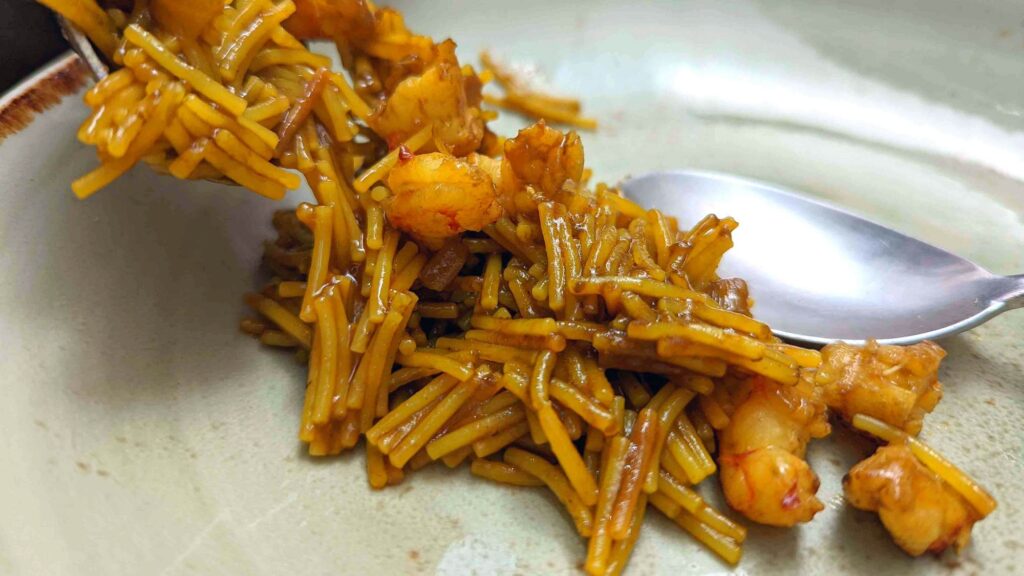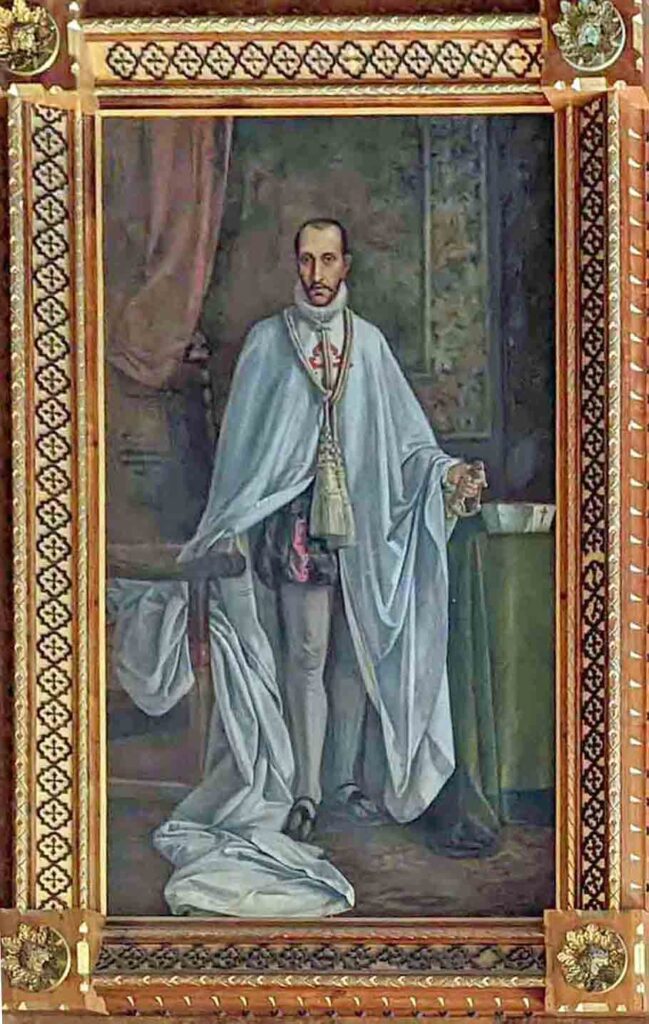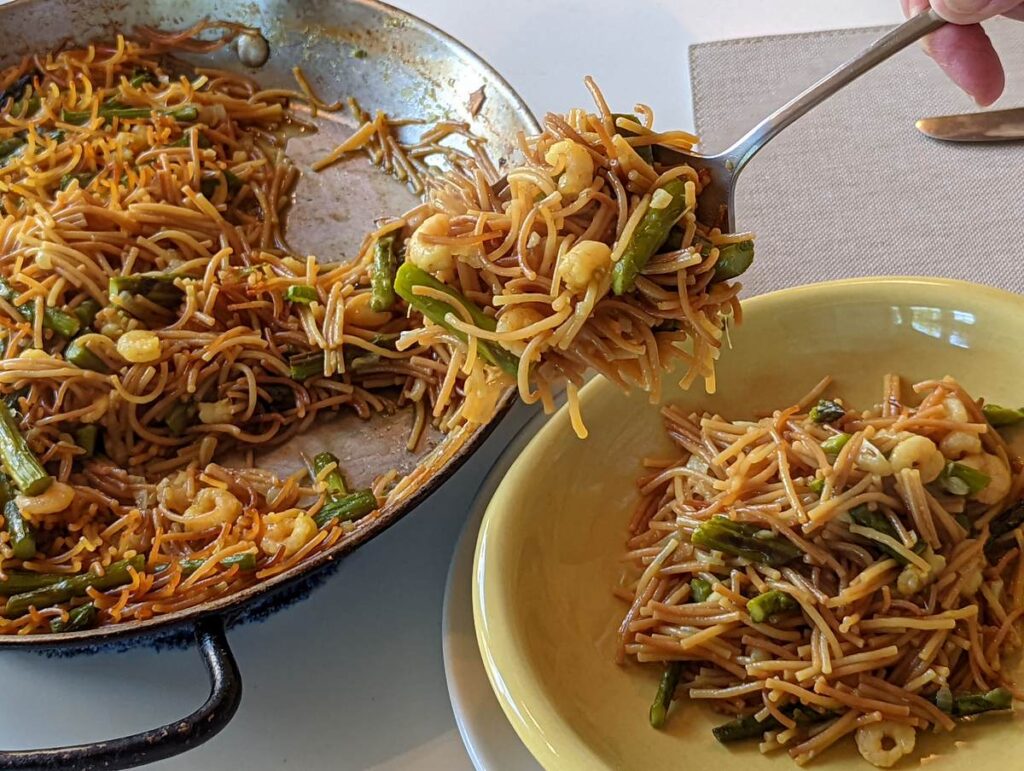
While we were living in Valencia, we took advantage of the cercanías (essentially the regional commuter rail) to explore beyond the metropolis. One Costa Blanca city on our bucket list (and on the train line) was Gandía.

The big attraction is the ducal palace of the Borja family, who rose to fame (or infamy) when they changed the spelling to Borgia and took over the papacy. The Palau Ducal (Carrer del Duc Alfons el Vell, 1, Gandía; +34 962 871 465; palauducal.com) is a sprawling Gothic fortified palace complex where Sant Francesc de Borja was born in 1510. He later became one of the most important figures in the history of the Society of Jesus. Thanks to the stewardship of the Jesuits, the building is full of striking art and artifacts, including the portrait of the saint at right. We’re glad we visited.
But we confess that our real reason for visiting Gandía was to eat the noodle version of paella said to have been invented there in the 19th century. Called fideuà (feed-ee-WAH) in Valenciano, it’s prepared much like paella but substitutes short thin pasta (fideos) for the rice. On our way from the train station to the palace, we passed a handsome restaurant with terrace seating. Even better, the menu of the day (€11) included fideuà as a main dish choice for a €2 supplement. We immediately called up the website and reserved a table at Saona (Carrer de Sant Pasqual, 14, Gandía; +34 962 881 816; gruposaona.com).
Over the years we’ve eaten fideuà in Catalunya, especially on the Costa Brava, where it’s often prepared with a fish stock tinted with squid ink. But this Gandía version was far less complex. Its very modesty was especially appealing. The wild asparagus had been roasted and lightly charred and the shrimp were already peeled. The toast on the noodles gave the whole dish a rich flavor. It lingered with us back in Valencia. Knowing that we’d want to try to replicate the dish at home, we made sure to buy noodles from a Spanish grocery store. Only later did we discover that Goya and Barilla both sell fideo noodles in the U.S. We’re glad to know that we don’t have to worry about using up our Spanish supply.
FIDEUÀ WITH SHRIMP AND ASPARAGUS
This version of the fideuà that we ate at Saona takes a few liberties. We substituted chicken stock for the fish stock, cultivated asparagus for wild, and wild-caught salad shrimp for the slightly larger Valencian lagoon shrimp. Otherwise, we proceeded as if making a paella.
Serves 2

INGREDIENTS
- 1/2 lb asparagus
- 4 tablespoons olive oil, divided
- 1/2 pound fideo pasta
- 1 large shallot, finely chopped
- 1/4 cup white wine
- 1 1/2 cups chicken broth
- generous pinch of saffron
- 1/2 teaspoon sweet paprika
- 1 cup salad shrimp
DIRECTIONS
Heat broiler in oven. Clean and trim asparagus. Toss spears with 1 tablespoon of olive oil. Line grill pan with aluminum foil and spread aspargus on it. Grill for four minutes per side until very lightly charred. Remove from heat and cut into 2-inch lengths. Set aside.
Set oven to 375°F. Arrange noodles on a baking sheet and drizzle with about 2 tablespoons of olive oil. Toss to distribute well. Bake 8-10 minutes, turning at mid-point, until noodles are golden brown.
Add saffron and paprika to stock in pot over low heat.
Place paella pan on the stove over medium heat. Add 1 tablespoon olive oil and shallots. Cook until shallots are soft.
Add toasted noodles and wine and press down with a spatula. As wine evaporates, add hot stock and press down on noodles as they begin to soften. Cook for 4 minutes, then add asparagus pieces and salad shrimp. Continue cooking until noodles have absorbed most of the liquid. They should be firm and the mixture slightly soupy. Serve immediately.
